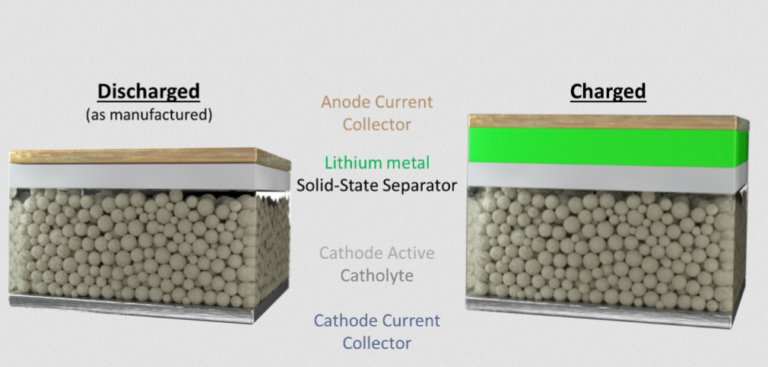QuantumScape, a US-based company working on the development of next-generation solid-state lithium-metal batteries for use in electric vehicles, has announced the release of an independent third-party laboratory testing report on the performance of its battery cells.
The company’s single-layer cells were tested by Mobile Power Solutions, an independent battery lab, and were found to meet automotive-relevant conditions: running over 800 cycles at 25°C, 1C (one hour) charge/discharge rates, with 100% depth of discharge and under 3.4 atmospheres of pressure.
“We are happy that these independent test results substantially replicate the cycling performance we reported at our December 2020 Battery Showcase,” said Jagdeep Singh, CEO and co-founder of QuantumScape. “With the publication of this report, we will continue to focus on our product roadmap goals and delivering cells to our customers.”
The test performed on QuantumScape’s cells reflected a complete cycle-life simulation, to ascertain how the cell chemistry performs under extended high-performance usage and various commercially relevant conditions for EVs. These conditions, which the company states must be met simultaneously, were used for the following reasons.
First, 800 cycles is said to be roughly equivalent to 240,000 miles (386,242km) driven for a 300-mile (483km) range vehicle and demonstrates the battery technology’s ability to perform over a vehicle’s expected lifetime. Meanwhile, the 25°C operating temperature, as opposed to elevated temperatures (e.g. 60-80°C), showed the robustness of the battery’s power capability. Similarly, the 1C charge/discharge rates indicated that the battery could operate at continuously high charge and discharge rates with minimal degradation (with energy retention maintained at more than 80%) over a long period (800 cycles in this case)
The 100% depth of discharge, whereby the battery was fully charged and discharged during every cycle of testing, was intended to be more strenuous for the battery than shallower charge and discharge cycles. Finally, the 3.4 atmospheres of pressure was sufficiently low to be representative for automotive applications.
The full cycle life test report from Mobile Power Solutions is here.


